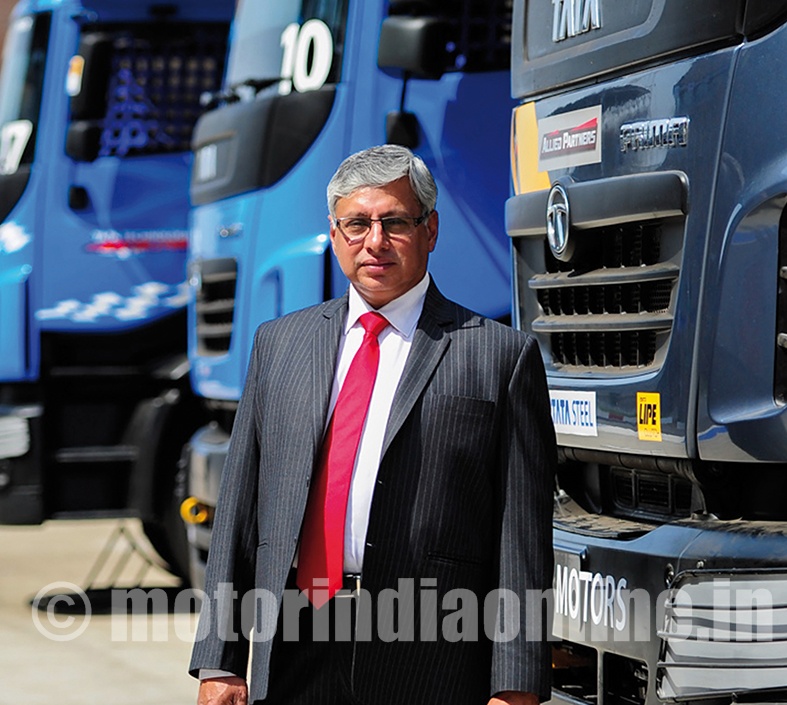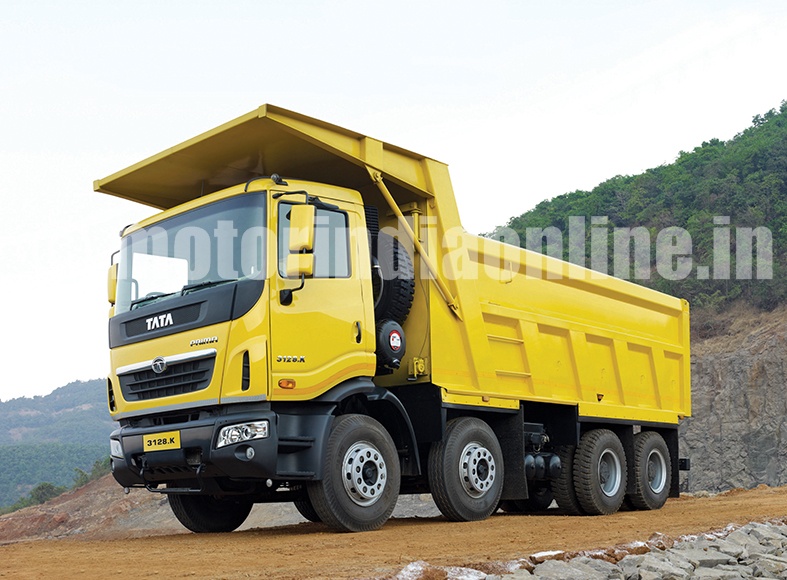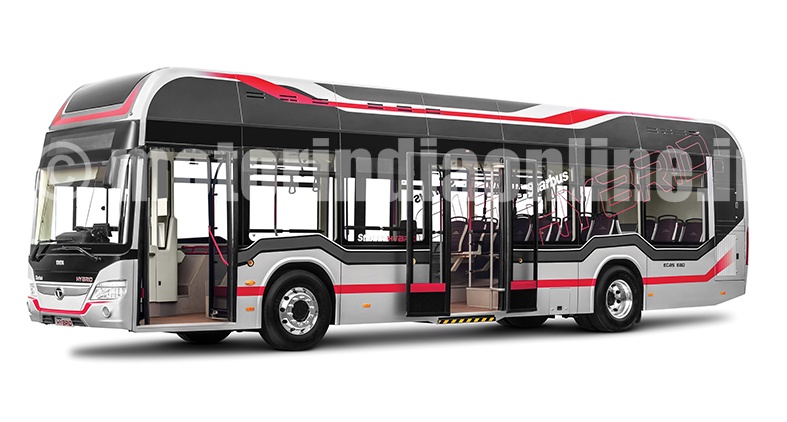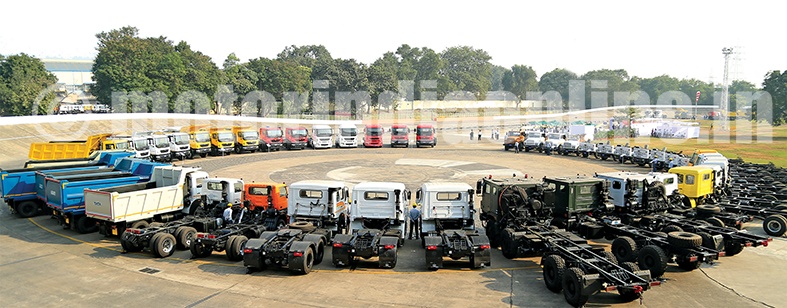After commercially launching the SIGNA and impressing one and all with its new cabin, dashboard, suspended seat and stylish fits and finish in the entire 4923 range, Tata Motors is ready to transform the other variants too. “We started with 4923 and now are going to gradually replace the 40 and 35 tonnes. Sometime in the third quarter we will start with the tippers. It will take 12 months as it is a high tooling activity, but our target is such that after 12 months we only want to see our Signa and Prima on roads as far as the M&HCV is concerned,” said Mr. Ravindra Pisharody, Executive Director, Commercial Vehicles, Tata Motors.

In ICVs, although the company has products up to 10 tonnes, Tata Motors is initiating launch of a 15-tonne product on a new 5 litre engine. “We are going to launch a 1518 on a 15 tonner ultra-cabin and will be calling it Ultra plus since the cabin is also slightly wider. The new 5 litre engine could help the vehicle get a power of 180 HP,” he explained.
It has been observed that with rated load application, more variants are required. Also a customer who carries a rated load application may not like thick frames. So, to cater to those most OEMs prefer launching different application on the same platform. With this preparation, Tata Motors which already has a 497 engine with 4 cylinders and 697 with 6 cylinders and the Cummins range will have a new addition with the Ultra plus 5 litre engines. There is a three litre engine planned too.
He disclosed: “We have plans also to introduce a new 3 litre engine along the lines of a 5 litre engine. Both the new engines will be common rail and of course will comply with not only BS-IV but also BS-VI. It will have a much lower NVH so the ride quality will be much better.”
Balancing wide portfolio
It is a well-known fact that the CV industry is a cyclical business by nature. “FY15-16 was already like the FY11-12 with some months even better than FY11-12. The next year things should be even better as BS-4 change-over in April 2017 will see some advance buying in January, February and March,” he added. While M&HCV is growing on a higher base, SCV also is beginning to grow. “Since January we are getting double-digit growth on SCV and pick-up and although it is nowhere near the peak it is getting better. It is doing even better in exports.”
Since SCV is starting to pick-up in the domestic market, Tata Motors also wants to continue exports. “Overall, exports comprise 15-16 per cent of our business, but still we are the largest exporter in our space. That’s how we are balancing. We are positioning ourselves as one of the global leaders in commercial vehicles, and that is also echoed by various research conducted by private agencies,” beamed the ED.
Clearly the idea is to expand the export turnover so much so that it can become some cushion if the domestic market slows down. “We want to expand our export turnover from the current 15 per cent and take it to at least 25 per cent. It is possible as in the last 2-3 years we have expanded in Asia, Malaysia, Philippines, Vietnam, Indonesia and even Australia. This is in tune with our aspiration to continue to be one of the global leaders in CVs across platforms and vehicles range,” informed Mr. Pisharody.
On the buses front, with the opening up of schools and demand for new buses, the LCV and ICV buses, i.e., 12-14 tonnes buses, are doing good. “We are very strong where we make buses from ACGL and Marcopolo, but buses in India continue to be smaller market as compared to China. On big buses, more than half are bought buy the STUs and that has been weak. We are hoping that when we supply the MMRDA with 25 hybrid electric buses that will also be a real demonstrator of our capabilities and demand for other variants too pour in. We also have CNG and diesel hybrid buses,” averred Mr. Pisharody.
Future of Indian CVs
The last one year has seen a lot of changes to the Indian commercial vehicles, and Tata Motors has also led from the front. “We have always met regulations and technology; sometimes even before its implementation, and led from the front. Our initiative to bring radial tyres to India is well remembered. We are ready not only for BS-IV but also gearing up for BS-VI. Our request to ministries is that fuel be made available for testing (in some major cities at least) a year ahead of the implementation. In the last one year we have successfully implemented ABS, speed limiting device and various other changes to SUPD, RUPD, frontal crash norms, etc.,” disclosed Mr. Pisharody.
Explaining the technology road map on which Tata Motors works for the next 4-5 years, he said: “On the technology front we have a strategy that we call Horizons 1, 2 and 3. Horizon one is for the products which will need investment the same year like the electric and hybrid initiatives happening this year. Horizon 2 is for things which are needed two years down the year. This may include a LNG (liquefied natural gas) which may come into picture for trucks. Horizon 3 relates to things like very iffy. They may happen or may not like fuel cells. We work on these three things in terms of technology and try and see what can be put in the market, and then allocate budget for all of them.”
The story cannot be completed without mentioning the phenomenal event – the Tata Prima Truck Racing which did the unthinkable of introducing actual Indian truck drivers to the racing arena.
He further explained: “With the success of the Indian truck driver’s race the entire event transformed into a sporting event that recognizes the Indian driver’s skills. It has been able to connect with truck owners, truck drivers and all the stake holders wanting to make the Indian trucking industry a respectable profession.”
Certainly the immense potential of truck racing has opened up several possibilities for future races. “Given the minimum difference Indian drivers had with foreign drivers, it has opened up a host of options to explore, like each sponsor team can have one Indian and one foreign driver, and Indian drivers can race amongst themselves and qualify for the Super class race. Even the trucks can be different. We could try Ultra or any other vehicle platforms to make it a long event,” added Mr. Pisharody.


